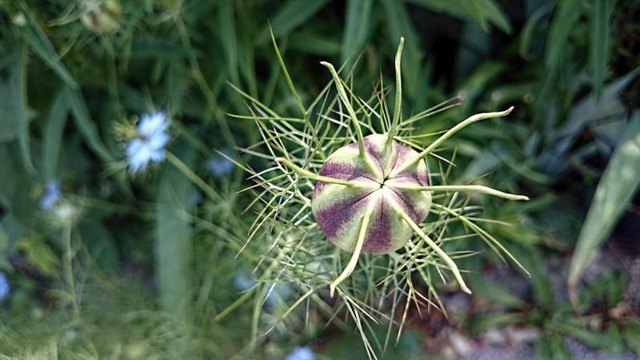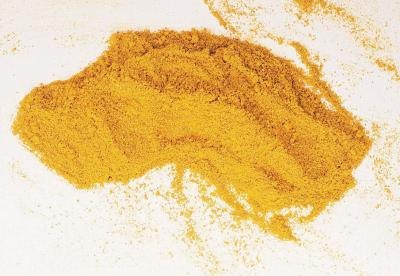| [1] | Pellera, F.M., Giannis, A., Kalderis, D., Anastasiadou, K., Stegmann, R., Wang, J.-Y., et al. (2011) Adsorption of Cu(II) Ions from Aqueous Solutions on Biochars Prepared from Agricultural By-Products. Journal of Environmental Management, 96, 291-291. |
|
| [2] | Erto, A., Giraldo, L., Lancia, A. and Moreno-Pirajan, J.C. (2013) A Comparison between a Low-Cost Sorbent and an Activated Carbon for the Adsorption of Heavy Metals from Water. Water, Air, & Soil Pollution, 224, 1-10.
http://dx.doi.org/10.1007/s11270-013-1531-3 |
|
| [3] | Ibrahim, M.N., Wan Ngah, W.S., Norliyana, M.S., Daud, W.R., Rafatullah, M., Sulaiman, O., et al. (2010) A Novel Agricultural Waste Adsorbent for the Removal of Lead(II) Ions from Aqueous Solutions. Journal of Hazardous Materials, 182, 377-385. http://dx.doi.org/10.1016/j.jhazmat.2010.06.044 |
|
| [4] | Owamah, H.I. (2013) Biosorptive Removal of Pb(II) and Cu(II) from Wastewater Using Activated Carbon from Cassava peels. Journal of Material Cycles and Waste Management, 1-12. |
|
| [5] | Al-Haidary, A.M.A., Zanganah, F.H.H., Al-Azawi, S.R.F., Khalili, F.I. and Al-Dujaili, A.H. (2011) A Study on Using Date Palm Fibers and Leaf Base of Palm as Adsorbents for Pb(II) Ions from Its Aqueous Solution. Water, Air, & Soil Pollution, 214, 73-82. http://dx.doi.org/10.1007/s11270-010-0405-1 |
|
| [6] | Depci, T., Kul, A.R. and Onal, Y. (2012) Competitive Adsorption of Lead and Zinc from Aqueous Solution on Activated Carbon Prepared from Van Apple Pulp: Study in Single-and Multi-Solute Systems. Chemical Engineering Journal, 200-202, 224-246. http://dx.doi.org/10.1016/j.cej.2012.06.077 |
|
| [7] | Fu, F. and Wang, Q. (2011) Removal of Heavy Metal Ions from Wastewaters: A Review. Journal of Environmental Management, 92, 407-418. http://dx.doi.org/10.1016/j.jenvman.2010.11.011 |
|
| [8] | Hameed, B.H., Din, A.T.M. and Ahmad, A.L. (2007) Adsorption of Methylene Blue onto Bamboo-Based Activated Carbon: Kinetics and Equilibrium Studies. Journal of Hazardous Materials, 141, 819-825.
http://dx.doi.org/10.1016/j.jhazmat.2006.07.049 |
|
| [9] | Yao, Z.Y., Qi, J.H. and Wang, L.H. (2010) Equilibrium, Kinetic, and Thermodynamic Studies on the Biosorption of Cu(II) onto Chestnut Shell. Journal of Hazardous Materials, 174, 137-143.
http://dx.doi.org/10.1016/j.jhazmat.2009.09.027 |
|
| [10] | Utomo, H.D. and Hunter, K.A. (2006) Adsorption of Divalent Copper, Zinc, Cadmium and Lead Ions from Aqueous Solution by Waste Tea and Coffee Adsorbents. Environmental Technology, 27, 25-32.
http://dx.doi.org/10.1080/09593332708618619 |
|
| [11] | Amarasinghe, B.M.W.P.K. and Williams, R.A. (2007) Tea Waste as a Low Cost Adsorbent for the Removal of Cu and Pb from Wastewater. Chemical Engineering Journal, 132, 299-309.
http://dx.doi.org/10.1016/j.cej.2007.01.016 |
|
| [12] | Akkaya, G. and Guzel, F. (2013) Bioremoval and Recovery of Cu(II) and Pb(II) from Aqueous Solution by a Novel Biosorbent Watermelon (Citrullus lanatus) Seed Hulls: Kinetic Study, Equilibrium Isotherm, SEM and FTIR Analysis. Desalination and Water Treatment, 51, 7311-7322.
http://dx.doi.org/10.1080/19443994.2013.815685 |
|
| [13] | Duan, C., Zhao, N., Yu, X., Zhang, X. and Xu, J. (2013) Chemically Modified Kapok Fiber for Fast Adsorption of Pb2+, Cd2+, Cu2+ from Aqueous Solution. Cellulose, 20, 849-860.
http://dx.doi.org/10.1007/s10570-013-9875-9 |
|
| [14] | Andrabi, S.M. (2010) Sawdust of Lam Tree (Cordia africana) as a Low-Cost, Sustainable and Easily Available Adsorbent for the Removal of Toxic Metals Like Pb(II) and Ni(II) from Aqueous Solution. European Journal of Wood and Wood Products, 69, 75-83. http://dx.doi.org/10.1007/s00107-009-0398-x |
|
| [15] | Makeswari, M. and Santhi, T. (2013) Use of Ricinus Communis Leaves as a Low-Cost Adsorbent for Removal of Cu(II) Ions from Aqueous Solution. Research on Chemical Intermediates, 1-21. |
|
| [16] | Shukla, P.M. and Shukla, S.R. (2013) Biosorption of Cu(II), Pb(II), Ni(II), and Fe(II) on Alkali Treated Coir Fibers. Separation Science and Technology, 48, 421-428.
http://dx.doi.org/10.1080/01496395.2012.691933 |
|
| [17] | Singha, B. and Das, S.K. (2013) Adsorptive Removal of Cu(II) from Aqueous Solution and Industrial Effluent Using Natural/Agricultural Wastes. Colloids and Surfaces B: Biointerfaces, 107, 97-106.
http://dx.doi.org/10.1016/j.colsurfb.2013.01.060 |
|
| [18] | Choi, W., Chung, S.G., Hong, S.W., Kim, D.J. and Lee, S.H. (2011) Development of an Environmentally Friendly Adsorbent for the Removal of Toxic Heavy Metals from Aqueous Solution. Water, Air, & Soil Pollution, 223, 1837-1846. http://dx.doi.org/10.1007/s11270-011-0988-1 |
|
| [19] | Schaafsma, A., Pakan, I., Hofstede, G.J., Muskiet, F.A., Van Der Veer, E. and De Vries, P.J. (2000) Mineral, Amino Acid, and Hormonal Composition of Chicken Eggshell Powder and the Evaluation of Its Use in Human Nutrition. Poultry Science, 79, 1833-1838. http://dx.doi.org/10.1093/ps/79.12.1833 |
|
| [20] | Brunauer, S., Emmett, P.H. and Teller, E. (1938) Adsorption of Gases in Multimolecular Layers. Journal of the American Chemical Society, 60, 309-319. http://dx.doi.org/10.1021/ja01269a023 |
|
| [21] | Barrett, E.P., Joyner, L.G. and Halenda, P.P. (1951) The Determination of Pore Volume and Area Distributions in Porous Substances. I. Computations from Nitrogen Isotherms. Journal of the American Chemical Society, 73, 373-380.
http://dx.doi.org/10.1021/ja01145a126 |
|
| [22] | Rafatullah, M., Sulaiman, O., Hashim, R. and Ahmad, A. (2010) Adsorption of Copper(II) onto Different Adsorbents. Journal of Dispersion Science and Technology, 31, 918-930.
http://dx.doi.org/10.1080/01932690903224003 |
|
| [23] | Mahmoud, G.A. (2013) Adsorption of Copper(II), Lead(II), and Cadmium(II) Ions from Aqueous Solution by Using Hydrogel with Magnetic Properties. Monatshefte for Chemie-Chemical Monthly, 1-10. |
|
| [24] | Chen, G., Fan, J., Liu, R., Zeng, G., Chen, A. and Zou, Z. (2012) Removal of Cd(II), Cu(II) and Zn(II) from Aqueous Solutions by Live Phanerochaete Chrysosporium. Environmental Technology, 33, 2653-2659.
http://dx.doi.org/10.1080/09593330.2012.673015 |
|
| [25] | Al-Jariri, J.S. and Khalili, F. (2012) Adsorption of Zn(II), Pb(II), Cr(III) and Mn(II) from Water by Jordanian Bentonite. Desalination and Water Treatment, 21, 308-322. http://dx.doi.org/10.5004/dwt.2010.1623 |
|
| [26] | Boota, R., Bhatti, H.N. and Hanif, M.A. (2009) Removal of Cu(II) and Zn(II) Using Lignocellulosic Fiber Derived from Citrus Reticulata (Kinnow) Waste Biomass. Separation Science and Technology, 44, 4000-4022.
http://dx.doi.org/10.1080/01496390903183196 |
|
| [27] | Reddy, D., Seshaiah, K., Reddy, A.V.R. and Lee, S.M. (2010) Optimization of Cd(II), Cu(II) and Ni(II) Biosorption by Chemically Modified Moringa oleifera Leaves Powder. Carbohydrate Polymers, 88, 1077-1086.
http://dx.doi.org/10.1016/j.carbpol.2012.01.073 |
|
| [28] | Wang, L., Chen, Z., Yang, J. and Ma, F. (2013) Pb(II) Biosorption by Compound Bioflocculant: Performance and Mechanism. Desalination and Water Treatment, 1-9. |
|
| [29] | Freundlich, H.M.F. (1906) Uber Die Adsorption in Lasungen. Journal of Physical Chemistry, 57, 385-370. |
|
| [30] | Langmuir, I. (1916) The Constitution and Fundamental Properties of Solids and Liquids. Part I. Solids. Journal of the American Chemical Society, 38, 2221-2295. http://dx.doi.org/10.1021/ja02268a002 |
|
| [31] | Lezcano, J.M., Gonzalez, F., Ballester, A., Blazquez, M.L., Munoz, J.A. and Garcia-Balboa, C. (2010) Biosorption of Cd(II), Cu(II), Ni(II), Pb(II) and Zn(II) Using Different Residual Biomass. Chemistry and Ecology, 26, 1-17.
http://dx.doi.org/10.1080/02757540903468102 |
|
| [32] | Hall, K.R., Eagleton, L.C., Acrivos, A. and Vermeulen, T. (1966) Pore- and Solid-Diffusion Kinetics in Fixed-Bed Adsorption under Constant-Pattern Conditions. Industrial & Engineering Chemistry Fundamentals, 5, 212-223.
http://dx.doi.org/10.1021/i160018a011 |
|
| [33] | Kubilay, A., Garkan, R., Savran, A. and Azahan, T. (2007) Removal of Cu(II), Zn(II) and Co(II) Ions from Aqueous Solutions by Adsorption onto Natural Bentonite. Adsorption, 13, 41-51.
http://dx.doi.org/10.1007/s10450-007-9003-y |
|
| [34] | El-Ashtoukhy, E.S., Amin, N.K. and Abdelwahab, O. (2008) Removal of Lead(II) and Copper(II) from Aqueous Solution Using Pomegranate Peel as a New Adsorbent. Desalination, 223, 162-173.
http://dx.doi.org/10.1016/j.desal.2007.01.206 |
|
| [35] | Elham, A., Hossein, T. and Mahnoosh, H. (2010) Removal of Zn(II) and Pb(II) Ions Using Rice Husk in Food Industrial Wastewater. Journal of Applied Sciences and Environmental Management, 14, 159-162. |
|
| [36] | Ramana, D.K.V., Jamuna, K., Satyanarayana, B., Venkateswarlu, B., Rao, M.M. and Sehaih, K. (2010) Removal of Heavy Metals from Aqueous Solutions Using Activated Carbon Prepared from Cicer arietinum. Toxicological and Environmental Chemistry, 92, 1447-1460.
http://dx.doi.org/10.1080/02772241003614312 |
|
| [37] | Sekomo, C.B., Rousseau, D.P.L. and Lens, P.N.L. (2012) Use of Gisenyi Volcanic Rock for Adsorptive Removal of Cd(II), Cu(II), Pb(II), and Zn(II) from Wastewater. Water, Air, & Soil Pollution, 223, 533-547.
http://dx.doi.org/10.1007/s11270-011-0880-z |
|
| [38] | Cao, X., Ma, L.Q., Rhue, D.R. and Appel, C.S. (2004) Mechanisms of Lead, Copper, and Zinc Retention by Phosphate Rock. Environmental Pollution, 131, 435-444.
http://dx.doi.org/10.1016/j.envpol.2004.03.003 |
|
| [39] | Sciban, M. and Klasnja, M. (2004) Wood Sawdust and Wood Originate Materials as Adsorbents for Heavy Metal Ions. Holz als Roh-und Werkstoff, 62, 69-73. http://dx.doi.org/10.1007/s00107-003-0449-7 |
|
| [40] | Shukla, S.R. and Pai, R.S. (2005) Adsorption of Cu(II), Ni(II) and Zn(II) on Dye Loaded Groundnut Shells and Sawdust. Separation and Purification Technology, 43, 1-8.
http://dx.doi.org/10.1016/j.seppur.2004.09.003 |
|
| [41] | Shukla, S.R. and Pai, R.S. (2005) Adsorption of Cu(II), Ni(II) and Zn(II) on Modified Jute Fibres. Bioresource Technology, 96, 1430-1438. http://dx.doi.org/10.1016/j.biortech.2004.12.010 |
|
| [42] | Grassi, D.A., Galicio, M. and Fernandez Cirelli, A. (2011) A Homogeneous and Low-Cost Biosorbent for Cd, Pb and Cu Removal from Aqueous Effluents. Chemistry and Ecology, 27, 297-309.
http://dx.doi.org/10.1080/02757540.2011.565750 |
|
| [43] | Paulino, A.L.G., Cunha, A.J.D., Alfaya, R.V.D.S. and Alfaya, A.A.D.S. (2013) Chemically Modified Natural Cotton Fiber: A Low-Cost Biosorbent for the Removal of the Cu(II), Zn(II), Cd(II), and Pb(II) from Natural Water. Desalination and Water Treatment, 1-11. |
|
| [44] | Fraile, A., Penche, S., Gonzalez, F., Blazquez, M.L., Munoz, J.A. and Ballester, A. (2005) Biosorption of Copper, Zinc, Cadmium and Nickel by Chlorella vulgaris. Chemistry and Ecology, 21, 61-75.
http://dx.doi.org/10.1080/02757540512331334933 |
|
| [45] | Williams, D.H. and Fleming, I. (1995) Spectroscopic Methods in Organic Chemistry. 5th Edition, The McGraw-Hill Companies, London. |
|
| [46] | Vagenas, N.V., Gatsouli, A. and Kontoyannis, C.G. (2003) Quantitative Analysis of Synthetic Calcium Carbonate Polymorphs Using FT-IR Spectroscopy. Talanta, 59, 831-836.
http://dx.doi.org/10.1016/S0039-9140(02)00638-0 |
|
| [47] | Rehman, I. and Bonfield, W. (1997) Characterization of Hydroxyapatite and Carbonated Apatite by Photo Acoustic FTIR Spectroscopy. Journal of Materials Science: Materials in Medicine, 8, 1-4.
http://dx.doi.org/10.1023/A:1018570213546 |








